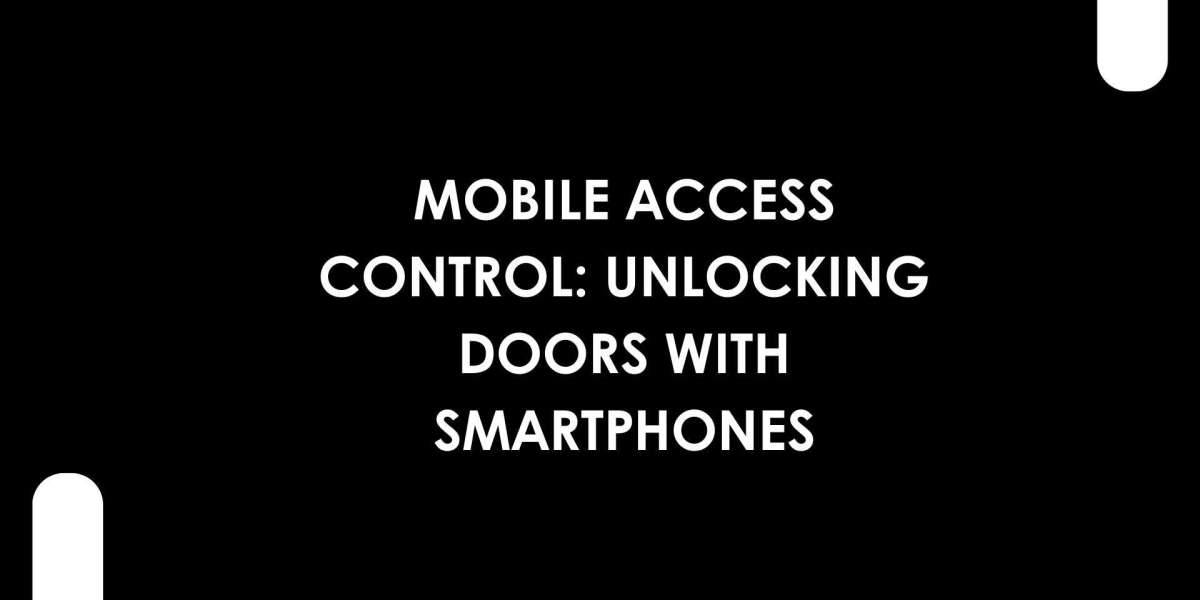Technology is changing the way we interact with the world around us. From smart homes to digital wallets, convenience is now at our fingertips. One of the most innovative developments in building security is the rise of mobile access control. With smartphones becoming our everyday tool for communication and organization, they are also becoming our keys.
At XTEN-AV, we recognize the growing demand for smarter, more flexible security solutions. Mobile access control is at the forefront of this shift, offering an efficient, secure, and contactless way to manage entry to buildings. Whether in commercial offices, hospitals, schools, or co-working spaces, using a smartphone to unlock doors is quickly becoming the new standard.
In this blog, we will explore what mobile access control is, how it works, its key benefits, and why it is an essential part of a modern Access Control System.
What Is Mobile Access Control
Mobile access control is a type of Access Control System that allows users to unlock doors using their smartphones. Instead of physical keys, cards, or fobs, access is granted through a mobile credential. These credentials are stored in an app or digital wallet and communicate with door readers via technologies like Bluetooth Low Energy (BLE), Near Field Communication (NFC), or Wi-Fi.
This solution eliminates the need to carry multiple cards or remember access codes. Users simply approach a door and tap their phone or use a hands-free gesture, depending on the system in place.
How Mobile Access Control Works
Mobile access control combines hardware, software, and secure communication protocols. The process typically involves:
Credential Issuance
Administrators issue digital credentials through a mobile app or email invite. These credentials are linked to the user’s smartphone and stored securely.Mobile App Integration
Users download the access control app and activate their credentials. Some systems support digital wallet storage, allowing access without opening an app.Door Communication
When a user approaches a door, their phone communicates with the reader via BLE or NFC. If the credential is valid, the system sends a signal to unlock the door.Cloud-Based Management
Most mobile access systems operate in the cloud, allowing real-time control, user management, and activity tracking from anywhere.
Benefits of Mobile Access Control
1. Convenience
People are more likely to forget a card than their phone. Mobile access eliminates the need to carry additional items or remember PINs. One device can hold credentials for multiple buildings or doors.
2. Contactless and Hygienic
Especially in a post-pandemic world, reducing shared touchpoints is a priority. Mobile access allows completely contactless entry, enhancing safety and hygiene.
3. Enhanced Security
Mobile credentials are encrypted and stored securely on the device. They are less likely to be cloned than traditional cards. Features like biometrics or face recognition can be added for extra protection.
4. Real-Time Updates
Administrators can issue, update, or revoke credentials instantly. If a phone is lost or an employee leaves the organization, access can be removed remotely without needing to retrieve a physical key.
5. Cost Efficiency
While the initial setup may require investment, long-term savings come from eliminating card printing, replacing lost fobs, and reducing administrative overhead.
6. Integration with Other Systems
Mobile access can be integrated with time tracking, visitor management, and smart building systems. This centralizes control and improves operational efficiency.
Use Cases for Mobile Access Control
Corporate Offices
Businesses with multiple floors or branch locations benefit from mobile access control by managing credentials across sites from a central platform. Employees enjoy faster, secure access with fewer delays.
Co-Working Spaces
With a rotating group of users, co-working spaces need a flexible and scalable solution. Mobile credentials allow easy access for members and guests while maintaining strict control.
Healthcare Facilities
Security and hygiene are vital in hospitals. Mobile access provides secure entry for staff while minimizing touchpoints and contamination risks.
Residential Buildings
Modern apartment complexes offer mobile access to residents, reducing the need for physical keys. This also enhances property value and convenience.
Education Campuses
Schools and universities can issue mobile credentials to students and staff, controlling access to classrooms, dorms, and labs without the need for ID cards.
Key Technologies in Mobile Access Control
Bluetooth Low Energy (BLE)
BLE is the most commonly used technology in mobile access systems. It allows users to unlock doors from several feet away without removing the phone from a pocket or bag.
Near Field Communication (NFC)
NFC works when the phone is held close to the reader, offering a secure tap-and-go experience. It is ideal for environments where controlled and deliberate entry is needed.
Cloud Connectivity
Modern Access Control Systems are increasingly cloud-based, allowing remote management, automatic updates, and real-time monitoring of access events.
Mobile App Features
Many mobile access apps offer features such as credential sharing, visitor invites, access schedules, and even integration with building maps or navigation tools.
Security Considerations
While mobile access control is highly secure, it is important to consider:
Device Management – Users should have PINs or biometrics enabled on their phones.
Remote Wipe Capability – In case a phone is lost, credentials should be revocable remotely.
Multi-Factor Authentication – Combining mobile credentials with biometrics can add another layer of security.
Regular Updates – Keeping mobile apps and firmware up to date ensures protection against vulnerabilities.
Conclusion
Mobile access control is transforming how we manage physical security. As smartphones become an extension of our identity, they offer a seamless, secure, and intelligent way to unlock doors and manage entry.
By integrating mobile access into your overall Access Control System, you create a more convenient and responsive environment for users while enhancing security and operational control.
At XTEN-AV, we empower AV designers and integrators to design forward-thinking access solutions. Whether upgrading an existing system or planning a new project, mobile access is a step toward smarter and safer spaces.
Read more: https://woowsent.com/read-blog/2725



